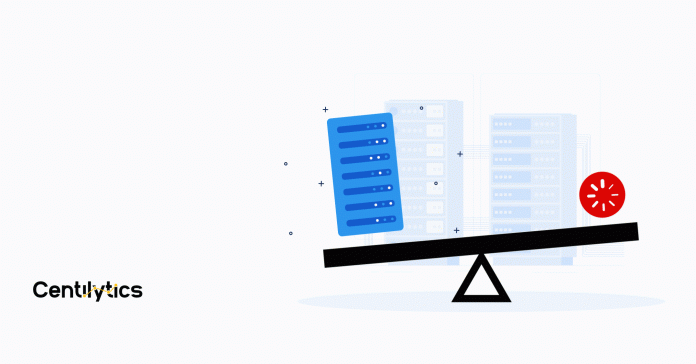The load balancer is a critical part of any distributed system. It helps to divide the traffic across a cluster of servers to make applications, websites, or databases more responsive and available. The load balancer also tracks the status of all resources while distributing requests. If a server is unable to receive new requests or does not respond or has a high error rate; load balancer may stop sending traffic to that database.

A load balancer is typically located between the client and the server; which handles incoming network and application traffic and distributes traffic through several backend servers using different algorithms. By balancing application requests across multiple servers, a load balancer reduces individual server load. It prevents each application server from becoming a single point of failure; thereby enhancing the overall availability and responsiveness of the application.
What is Elastic Load Balancer in Amazon AWS?
Elastic Load Balancing is an automatic distributor of incoming application traffic across multiple Amazon EC2 instances. It enables you to achieve a greater level of fault tolerance by seamlessly providing the required amount of load balancing capacity to distribute application traffic.
When Elastic Load Balancing detects error-prone instances, it automatically reroutes traffic to error-free instances until the error-prone instances have been restored. Customers can enable Elastic Load Balancing within a single of many multiple Availability Zones for more consistent application performance. Elastic Load Balancing is also used in Amazon Virtual Private to distribute traffic between application tiers in a virtual network.
Benefits of Elastic Load Balancer in AWS
- Security: AWS Elastic Load Balancer is very secure because it works with Amazon Virtual Private Cloud and provides many robust security features, including integrated certificate management, user-authentication, and SSL/TLS decryption. Together they can give us the flexibility to centrally manage TLS settings and offload CPU intense workouts from your applications.
- Elastic: AWS Elastic Load Balancing can handle rapid changes in network traffic patterns. Also, deep integration with Auto Scaling ensures sufficient application capacity to meet varying levels of application load without requiring manual intervention.
- High Availability: AWS Elastic Load Balancer automatically distributes incoming traffic across multiple targets like Amazon EC2 instances, containers, IP addresses, and Lambda functions in multiple Availability Zones and ensures only available instance receives traffic. The Amazon Elastic Load Balancing Service, Level Agreement commitment, is 99.99% availability for a load balancer.
- Hybrid Load Balancing: AWS Elastic Load Balancing offers the ability to load balance across AWS and on-premises resources using the same load balancer. This makes it easy for the user to migrate, burst, or failover on-premises applications to the cloud.
- Flexibility: AWS ELB also allows you to use IP addresses to route requests to application targets. It offers user flexibility to virtualize your application targets, thus allowing you to host more applications in the same instance.
- Robust Monitoring and Auditing: It also supports user’s applications and their overall performance in real-time with Amazon Cloud Watch metrics, logging, and request tracking. It improves the visibility into the behavior of your applications, uncovering issues, and identifying performance bottlenecks in your application stack at the granularity of an individual request.
Use Cases
For a better understanding of Amazon Elastic Load Balancer here are the used cases:
• To achieve better fault tolerance for your applications
• To automatically load balance your containerized applications
• Automatically scale your applications
• To use Elastic Load Balancing in your Amazon Virtual Private Cloud (Amazon VPC)
• Hybrid load balancing with Elastic Load Balancing
• Invoking Lambda functions over HTTP(S)


